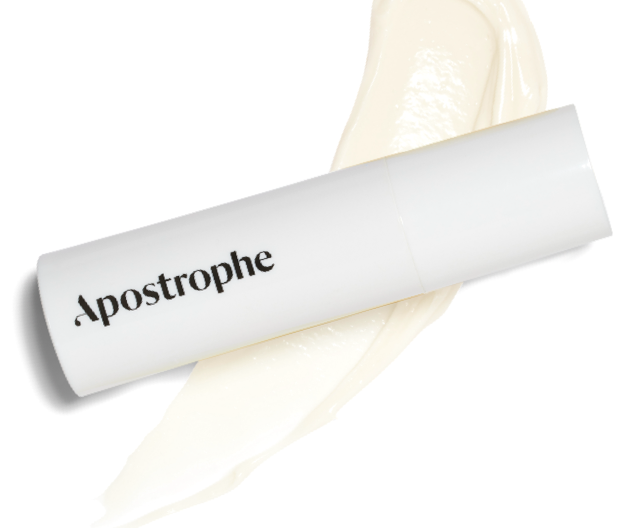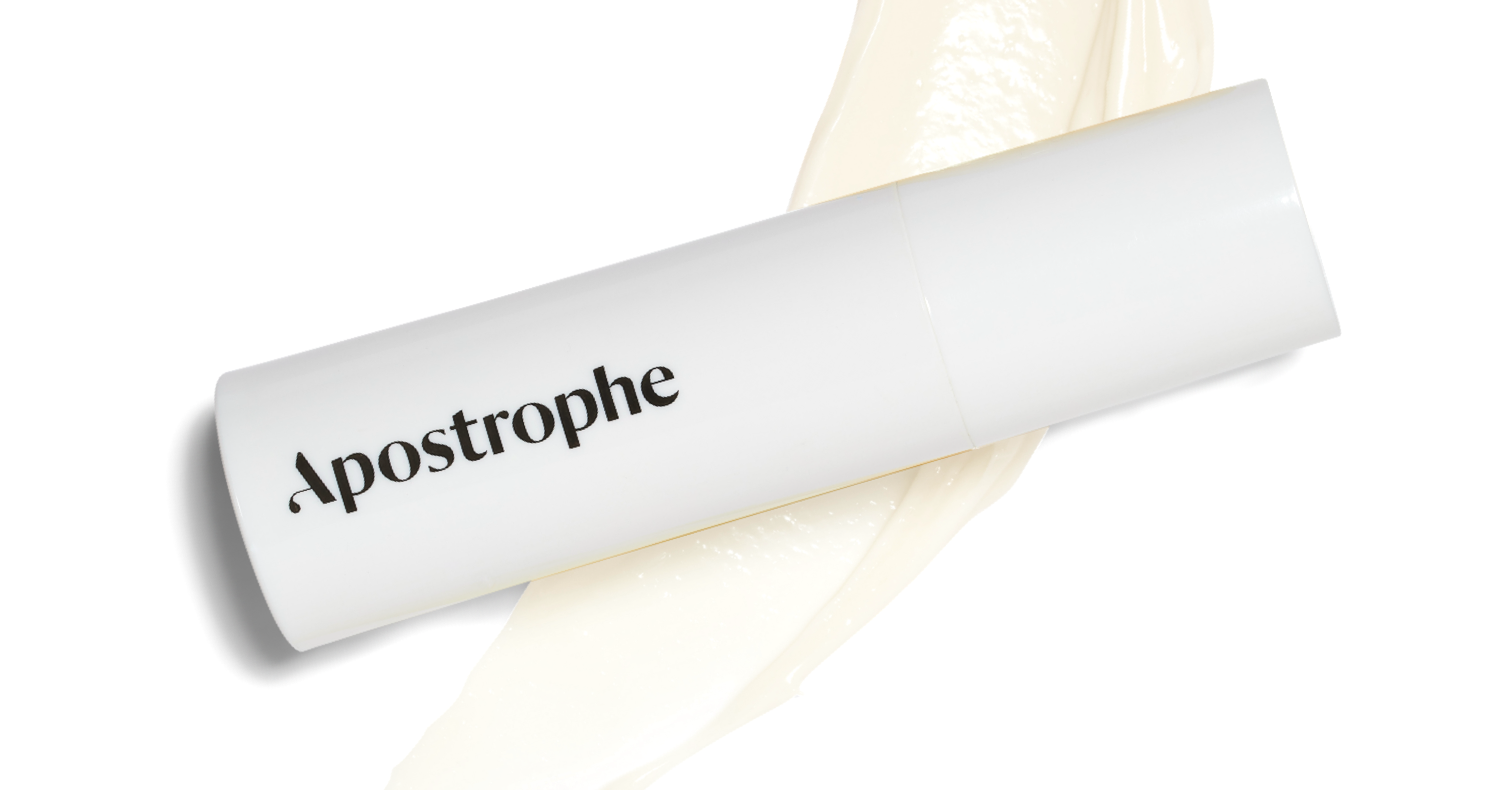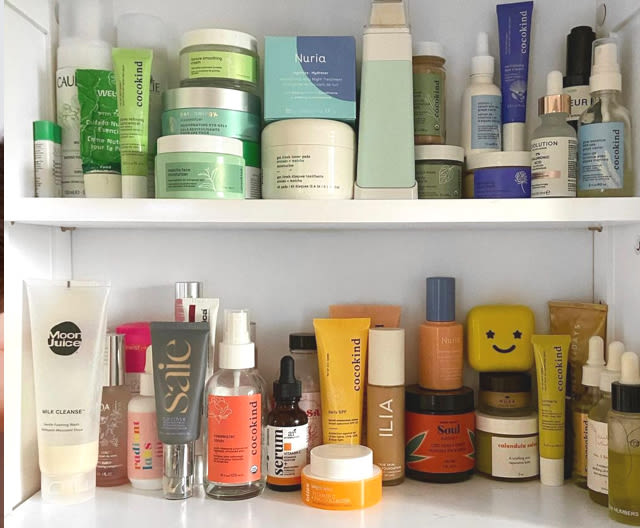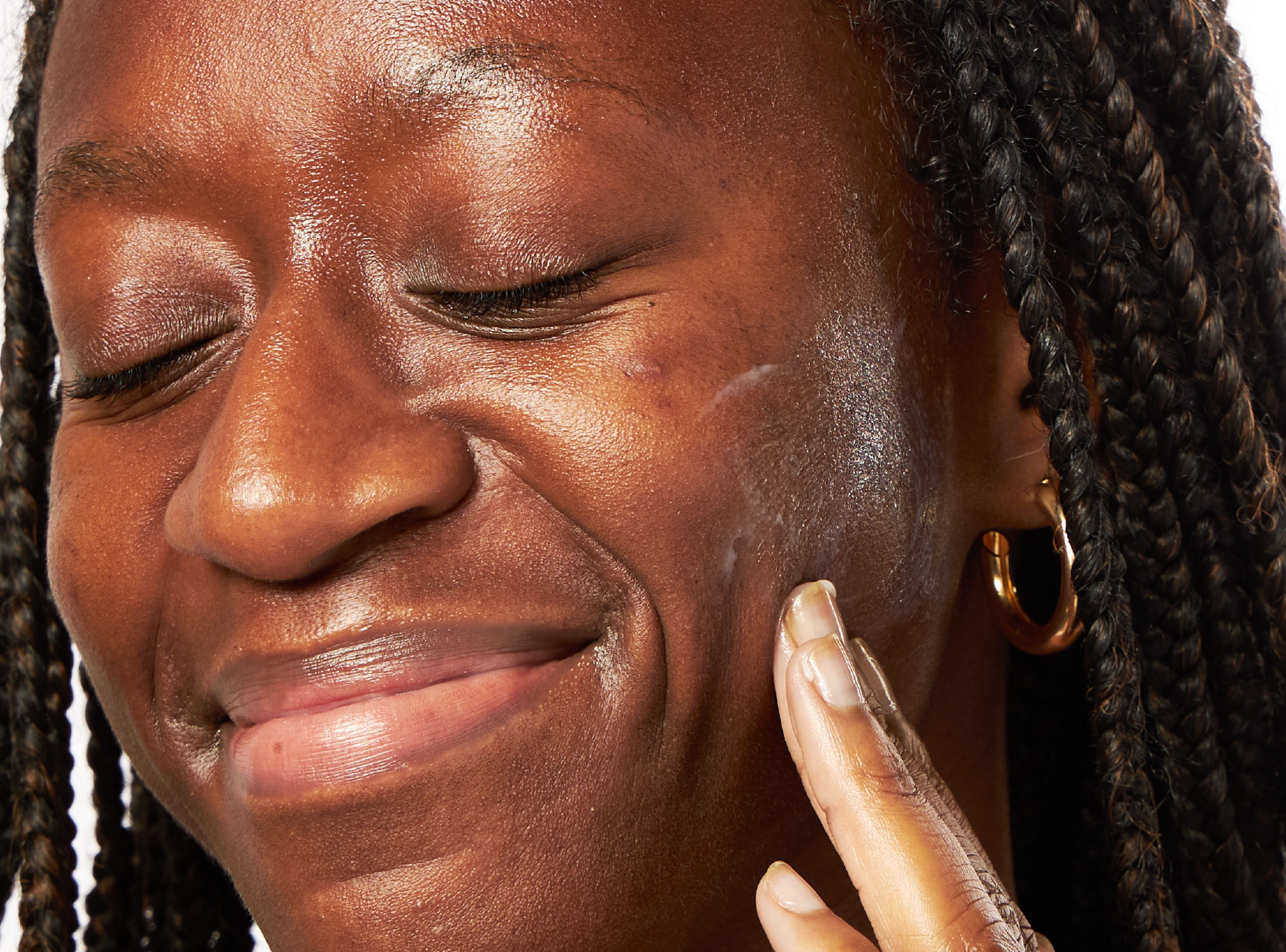Education
Tretinoin vs Retinol


SHARE
Education
Tretinoin vs Retinol
Medically reviewed by Aimee Paik, MD
Written by Apostrophe Team
Last updated 1/2/2023
Tretinoin vs Retinol
Retinol, tretinoin, retin-A, adapalene—you might’ve seen these words pop up in the beauty aisle. But what exactly are they? And are they all the same, or do they have different roles on your skincare team?
Known as retinoids, these powerhouse ingredients are stars of the skincare world—and for good reason! Their healing powers work at the cellular level, helping everything from acne to wrinkles. Almost any skin type could benefit from retinoids. But it turns out, they aren’t just one-size-fits-all.
To find your optimal skincare routine, let’s break down two of the most popular retinoids—tretinoin vs retinol.
What are Tretinoin and Retinol?
Tretinoin and retinol are both retinoids—a class of ingredients derived from vitamin A. Think of retinoids like a big skincare family tree with branches, including compounds like:
Retinol
Retinoic acid (tretinoin)
Alitretinoin
Adapalene
Tazarotene
Bexarotene
Retinoids are common for treating a variety of skin conditions including signs of aging, dark spots, and acne. However, there are some key differences between the two retinoids. While some individuals may benefit from tretinoin’s strength as an effective acne treatment, others might prefer retinol’s gentler touch. We’re going to dive into the main characteristics of both compounds.
Retinol Characteristics
Mild and slow working, retinol is often the doorway to retinoids. You can find this topical compound in everything from moisturizers to eye creams to serums.
Like all retinoids, retinol provides some pretty handy skin benefits. When applied regularly, it can give your skin:
Softer texture
A brighter appearance
Wrinkle and aging prevention
Reduced breakouts
Chemically, retinol is a more gentle retinoid. When applied, it must be converted by enzymes into retinoic acid—only then can it benefit your skin. This means taking a slow-but-steady approach, where benefits might not show up for months and may not be as dramatic.
Tretinoin Characteristics
In the retinoid family, tretinoin (or retinoic acid) is the stronger, busy-bee older sister to retinol. Commonly called by the brand name Retin-A, it’s one of the more powerful skincare ingredients on the market.
Like many retinoids, tretinoin helps improve skin conditions like fine lines and blemishes. But a few key differences separate tretinoin from retinol and other mild variants, including:
Bioactive form – Unlike retinol, tretinoin contains pure retinoic acid. Why does this make a difference? Retinoic acid is an active retinoid form, easily absorbed by the skin. So when applying tretinoin, your skin enzymes don’t have to convert it to retinoic acid—it’s already ready to work!
Strength – As a retinoid, tretinoin is usually a treatment for more severe or stubborn skin issues (reoccurring acne, dark spots, etc). Because retinoids are at least 20 times more potent than retinols, tretinoin is known for its strength.
Prescription – Due to its strength and effectiveness, you can only access tretinoin with a doctor’s prescription.
How Do Tretinoin and Retinol Work?
So, what’s the secret behind the skin magic of retinoids? The wonderful work of chemistry.
Both retinol and tretinoin work as topical solutions (applied directly to the skin), but their benefits penetrate down to the deep layers of your epidermis. Like all retinoids, their main function is elevating skin cell turnover. The less dead skin cells in the way, the more new cells to create healthier, glowing skin.
By pushing new cellular skin growth, both compounds help skin with:
Brightness – By speeding up natural exfoliation, retinoids keep your skin fresh. After side effects fade, your skin will have less flakes or dead matter to dull its appearance.
Anti-aging – Retinoids were found to increase collagen and elastin, two essential skin building blocks. These proteins give skin its youthful fullness, elasticity, and glow.
The results? Clearer, smoother complexions. However, there’s one major difference in how tretinoin and retinol work—active vs. inactive chemical makeup.
Retinoic acid, or tretinoin, is a retinoid form immediately usable by your skin. However, retinol is inactive at first on the skin. To reach its potential, your skin enzymes must slowly metabolize retinol into retinoic acid. This slows down retinol’s effectiveness, with results appearing anywhere after three months to a year.
What Are the Strengths of Tretinoin and Retinol?
Between the two retinoids, you can’t go too wrong—both boost overall skin health and appearance. But depending on your skin condition, you might benefit from one over the other.
To find your ideal retinoid, let’s break down the strengths of each topical:
Tretinoin is...
Stronger – Overall, tretinoin is the stronger-harder-faster version of retinol. In fact, studies show retinoic acid is about twenty times more powerful than retinol. Though this treatment is certainly powerful, a wide variety of tretinoin strengths are available, making it easy for patients to find a dosage that’s ideal for their skin. Tretinoin is a key fighter against severe skin troubles (cystic acne, heavy dullness), but perhaps too harsh for sensitive skin.
Faster-acting – As a bioactive retinoid, tretinoin typically outraces retinol in producing skin results. Tretinoin users can see visible changes after four to six weeks of regular use.
Can result in more side-effects – With great power comes great responsibility—or great flakiness. Since tretinoin works so powerfully, it can cause initial dryness, irritation, sun sensitivity, and acne purging. It can take up to ten weeks to acclimate to a retinoid after beginning a treatment, but you can work with your skincare provider to ensure you experience minimal side-effects. Peeling does not need to happen for a retinoid to work effectively.
Requires a prescription – To get your hands on tretinoin, you’ll need a medical prescription.
Retinol is…
Slow and steady – Retinol takes a gentler approach. Because retinol is a less “pure” form of vitamin A, it takes longer for your skin to put to use. It can take six to twelve months to create real improvement, however this can vary based on the product and a person’s unique skin.
May be better for skin sensitive to side effects – Retinol may have similar side-effects as tretinoin, but usually at a lesser level.
Available over the counter – Retinol products are available at your local skincare shop or drug store.
Not as proven as an acne treatment as tretinoin – When it comes to treating acne, there are fewer proven clinical studies that link noticable changes in retinol-users’ skin. For demonstrable results, you may need to turn to tretinoin.
A Word On Retinol Concentration
It’s important to note that the concentration of a retinol matters less than the ingredient amount. What that means is that the concentration percentage listed on a product doesn’t always indicate that product’s percentage of retinol. Instead, it can indicate the percentage of the product’s retinol-containing ingredient. For example, a product boasting a higher percentage retinol concentration may actually not be as concentrated in retinol as you think. It may just be high in the ingredient that contains the retinol, while the retinol itself is much lower in concentration in reality. Work with a professional skincare expert to find a retinol product that works for you and your skin.
Can I Combine Using Tretinoin and Retinol?
The short answer? We (and most dermatologists) don’t recommend it.
Tretinoin and retinol work similarly, except tretinoin is more effective. If you combine tretinoin and retinol, you create a higher chance of skin overload—more acne purging, irritation, and flakiness. It’s a bit like trying to mow your lawn with an industrial mower and a hand-mower: you might just end up with a wrecked yard.
To avoid side effects and maximize skin benefits, here are a few tips for using retinoids:
Stick with one product – In skincare, there can definitely be too many cooks in the kitchen. Using only one retinoid can help you determine if it’s a true match for your skin. Likewise, jumping into multiple topicals can easily overwhelm your skin, boosting irritating side effects.
Start slow – If completely new to the retinoid world, enter slowly. Retinol might not be your ideal or goal treatment strength, but it can help your skin adjust to the effects of retinoids before upgrading to tretinoin.
Let a professional help you choose a strength – All topical retinoids come in different concentrations—the higher the concentration, the stronger the results (and side effects). Under prescriptions, tretinoin comes in .018%, 0.025%, 0.05%, and 0.1% concentrations. Retinol has a wider range across over-the-counter options, but common concentrations include 0.25%, 0.3%, 0.5%, and 1.0%. But remember the exact ingredient is much more important than the numbers that come after it, with tretinoin 0.018% being much stronger than retinol 1%.
Seek quality – Not all retinoids are created equal. Tretinoin formulas with soothing agents (like the niacinamide in Apostrophe’s formula) can reduce initial flakiness or irritation. Similarly, moisturizing products (creams) usually help your skin adjust better than gels.
Who Are the Best Candidates for Tretinoin and Retinol?
Seeking that lit-from-within glow? Battling severe acne from hormonal imbalance since puberty? At the end of the day, both tretinoin and retinol are beneficial agents for any skin type. But depending on your skin’s sensitivity and condition, one retinoid might better fit your needs.
Retinol Candidates
Both retinol and tretinoin increase skin cell turnover, helping everything from acne to aging. But as an inactive retinoid form, retinol’s powers are overall weaker than tretinoin.
While retinol does take its time, it does have two advantages—gentleness and availability. The minute retinoic acid conversion reduces extreme side effects, while over-the-counter options make it an accessible entrance to the retinoid world.
You might be a good candidate for retinol if you have:
Very sensitive or very dry skin
Minimal skin issues
Restricted access to prescriptions
Little or no experience with retinoids
Tretinoin Candidates
There’s no denying—tretinoin is simply stronger than retinol. This bioactive retinoid works faster and deeper than retinol, making it a solid choice for almost any skin concern.
However, sensitive skin might not handle tretinoin’s superpowers quite as well. Highly sensitive skin may experience harsher side effects from tretinoin, from flaking to redness. But for most, those growing pains fade within a few weeks.
You might be a good candidate for tretinoin if you have:
Recurring or severe acne
Deeper wrinkles and fine lines
Hyperpigmentation
Retinoids experience
Balanced or resilient skin
Retinoids—A Win-Win Choice
In the end, it’s hard to make a wrong choice with retinoids. This skincare product is a win-win for almost all faces! But to really reap the skin benefits, the strength of tretinoin beats out retinol. That’s why Apostrophe uses the science-backed powers of tretinoin and tazarotene in our retinoid formulas.
Whether you have wrinkles, dark spots, or stubborn acne, it’s worth talking to a dermatologist or other healthcare provider about any retinoid product. Start today, and you can start your journey to clear and healthy skin.
Shop this post

Tretinoin
Like what you just read? Sign up for our email list to get the scoop on skincare science delivered straight to your inbox.

Education
What is milia?
What is milia? Today, we’re jumping into one type of bump that you may have heard about most commonly in infants — milia.
Read More
Education
Best moisturizer for acne-prone skin
If you have combination acne-prone skin, figuring out which moisturizer is best for your skin might be tough. In this guide, we break down the best moisturizer for combination, acne-prone skin.
Read More
Education
How to build a face care routine
As you get into skincare, it might seem overwhelming, especially trying to figure out the order you're supposed to apply products in. Below, we detail how to build a face care routine for your skin!
Read More
